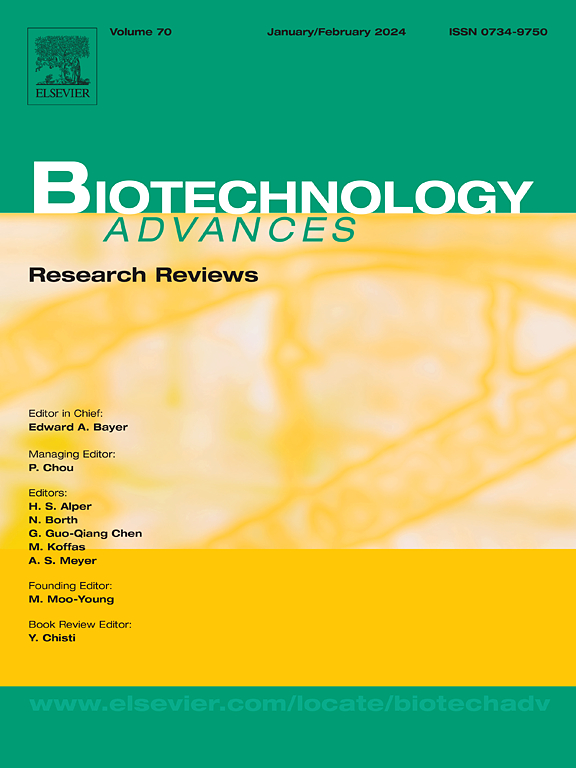合成甲基营养微生物的甲醇代谢。
IF 12.5
1区 工程技术
Q1 BIOTECHNOLOGY & APPLIED MICROBIOLOGY
引用次数: 0
摘要
甲醇作为化学生物制造的理想碳源,由于其丰富和易于获得而受到越来越多的关注。微生物甲基化主要是指利用还原的单碳化合物如甲醇、甲烷或甲醛作为唯一或主要的碳和能量来源来维持生长的能力。除了天然的甲基营养微生物,如Komagataella phaffii (K phaffii), Methylobacterium敲诈杆菌(M.敲诈杆菌),methanolicus芽孢杆菌(B. methanolicus),许多其他酵母或细菌已经被改造成甲基营养或通过重建甲醇利用途径。这大大拓宽了甲醇代谢的场景,并利用了大肠杆菌(E. coli)等成熟的平台微生物合成生物学工具箱。本文深入研究了甲醇代谢途径(包括甲醛和甲酸)的详细研究,并概述了合成甲基营养微生物代谢工程的最新进展。它特别强调了人工甲基化所采用的创新C1同化途径。这一全面的讨论旨在提高我们对甲醇代谢的理解,并释放合成甲基营养物的工业潜力。本文章由计算机程序翻译,如有差异,请以英文原文为准。
Methanol metabolism in synthetic methylotrophic microorganisms
Methanol has garnered increasing attention as an ideal carbon source for chemical biomanufacturing due to its abundance and easy availability. Microbial methylotrophy mainly refers to the ability to utilize reduced one-carbon compounds such as methanol, methane or formaldehyde as sole or primary sources of carbon and energy to sustain growth. Besides native methylotrophic microbes, such as Komagataella phaffii (K. phaffii), Methylobacterium extorquens (M. extorquens), Bacillus methanolicus (B. methanolicus), many other yeasts or bacteria have been engineered to exhibit methylotrophy or by reconstructing methanol utilization pathways. This significantly broadens the scenario of methanol metabolism and leverages the well-established synthetic biology toolbox of platform microorganisms like Escherichia coli (E. coli). This article delves into the detailed examination of methanol metabolic pathways (including formaldehyde and formate) and provides an overview of recent progress in metabolic engineering for synthetic methylotrophic microorganisms. It specifically highlights the innovative C1 assimilation pathways employed in artificial methylotrophy. This comprehensive discussion aims to enhance our understanding of methanol metabolism and unlock the industrial potential of synthetic methylotrophs.
求助全文
通过发布文献求助,成功后即可免费获取论文全文。
去求助
来源期刊

Biotechnology advances
工程技术-生物工程与应用微生物
CiteScore
25.50
自引率
2.50%
发文量
167
审稿时长
37 days
期刊介绍:
Biotechnology Advances is a comprehensive review journal that covers all aspects of the multidisciplinary field of biotechnology. The journal focuses on biotechnology principles and their applications in various industries, agriculture, medicine, environmental concerns, and regulatory issues. It publishes authoritative articles that highlight current developments and future trends in the field of biotechnology. The journal invites submissions of manuscripts that are relevant and appropriate. It targets a wide audience, including scientists, engineers, students, instructors, researchers, practitioners, managers, governments, and other stakeholders in the field. Additionally, special issues are published based on selected presentations from recent relevant conferences in collaboration with the organizations hosting those conferences.
 求助内容:
求助内容: 应助结果提醒方式:
应助结果提醒方式:


